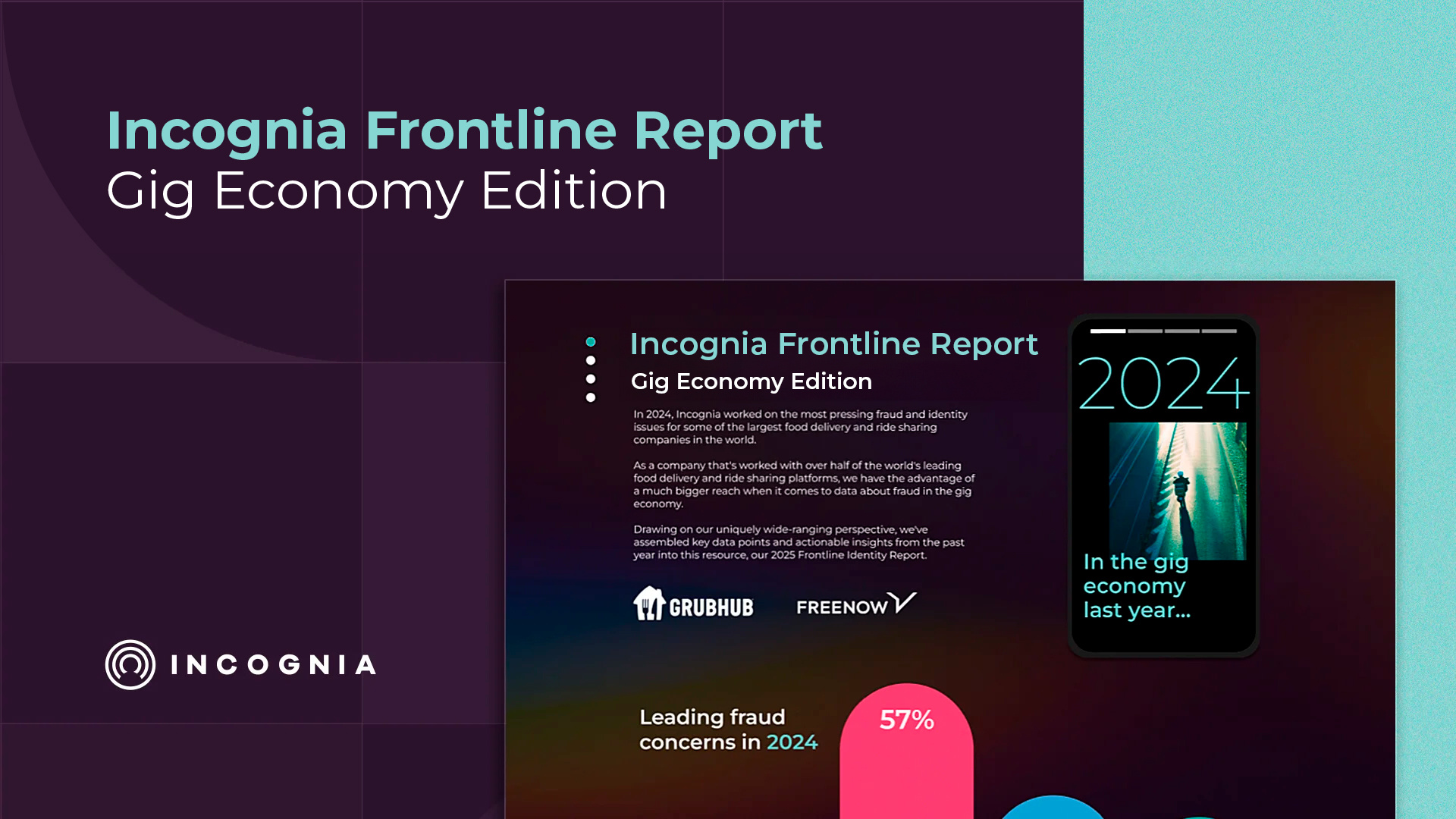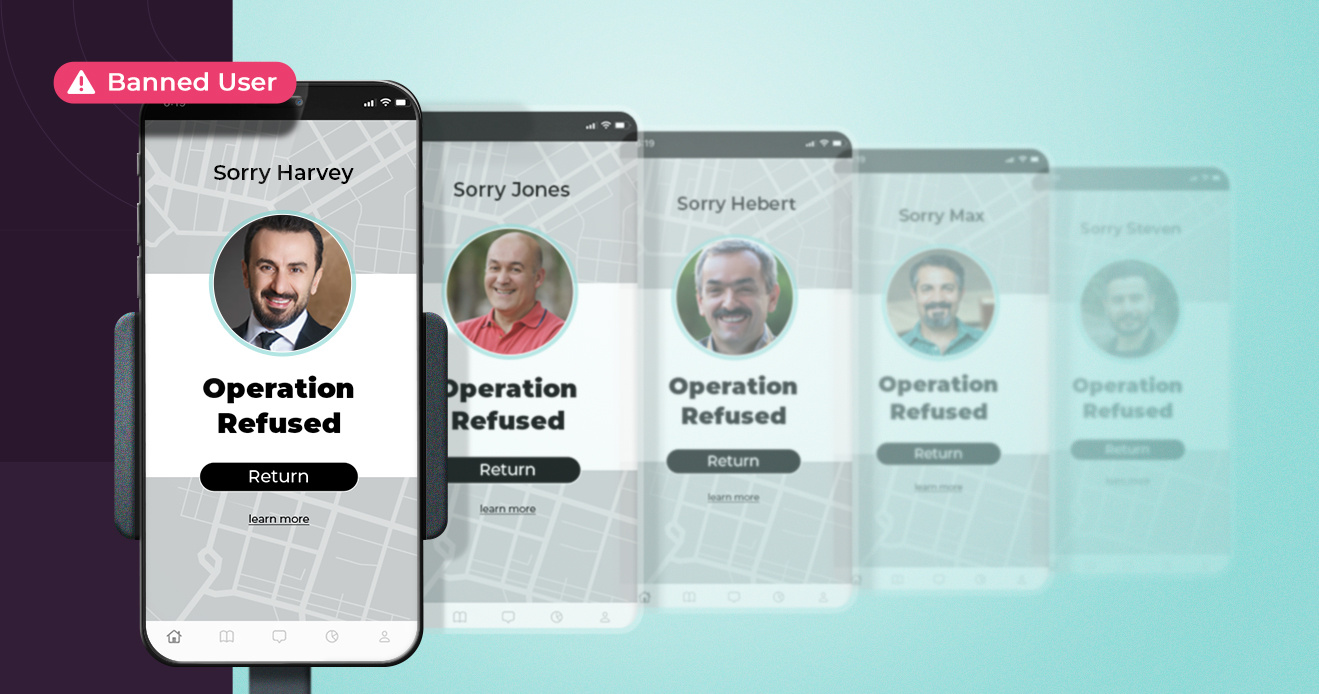- Blog
- User Verification: The Importance of Achieving Real-time and Accurate Results
User Verification: The Importance of Achieving Real-time and Accurate Results
User verification is crucial for online security, confirming identities, and ensuring authorized access. Robust verification mitigates fraud, builds trust, improves conversion rates, and aids regulatory compliance.
Subscribe to the Incognia Newsletter
At its core, what is user verification? User verification, at its core, is the digital gatekeeper confirming the identities of online users. Think of it as the virtual bouncer at the coolest online club, making sure only people whose faces match their IDs can enter. That crucial process verifies the identity of end-users, ensuring that the correct person is at the end during every digital exchange.
Diving into user verification solutions reveals a diverse pack of tools. From your usual email and phone number confirmations to the sophisticated layers of two-factor authentication and biometric recognition, each method serves a singular goal: strengthening security and verifying user identities accurately and swiftly.
Types of user verification solutions
User verification solutions come in various forms, some more resilient than others. Email and phone verification are some of the most common—email verification involves sending a link or code to the user's registered email address. By clicking the link or entering the code, the user confirms their identity, or at least confirms that they are the owner of the email address provided.
Phone number verification requires users to provide their phone number, which is then verified through a one-time password (OTP) sent to their device. This method adds an extra layer of security as it verifies the user's possession of the phone number. It also helps add a layer of complication for fraudsters wanting to commit multi-accounting. Now, instead of just creating new email addresses, they need new phone numbers to create new accounts.
Two-factor authentication (2FA) is a popular method that combines two verification factors, usually something the user knows (like a password) and something they have (like a mobile device). This approach adds an additional level of security and helps prevent unauthorized access.
Biometric authentication uses unique physical or behavioral characteristics, such as fingerprints, facial recognition, or voice patterns, to verify the user's identity.
Other user verification solutions may include document verification, where users provide official documents for identity verification, or social media verification, which verifies user identity through their social media profiles.
Business benefits of user verification
User verification isn’t just about confirming a user's identity; it also offers numerous business benefits. One of the most significant advantages is risk mitigation. By implementing robust user verification solutions, businesses can reduce the risk of fraud, identity theft, and unauthorized access to sensitive information. This, in turn, protects both the business and its customers from potential financial losses and reputational damage.
User verification also plays a crucial role in building customer trust and satisfaction. When users know that their information is secure and their identity is protected, they feel more confident in engaging with a platform or conducting transactions online. This increased trust leads to higher customer satisfaction and loyalty, which can result in repeat business and positive word-of-mouth referrals.
Additionally, accurate user verification can improve conversion rates. When users feel confident in the security measures implemented by a business, they are more likely to complete the registration process or make a purchase. This can lead to increased conversions and ultimately, higher revenue for the business.
Yet another important benefit of user verification is the prevention of account takeovers. By verifying user identity, businesses can ensure that only authorized individuals have access to accounts, minimizing the risk of fraudulent activities and unauthorized changes to user profiles or settings.
Lastly, user verification is essential for regulatory compliance. Many industries, such as finance and healthcare, are subject to strict regulations regarding the protection of user data and privacy. Implementing strict user verification measures helps businesses meet these regulatory requirements and avoid penalties or legal consequences.
Factors to consider while selecting user verification solutions
Now, how do you choose the user verification solution that fits your business best? Well, there are several important factors to consider. Firstly, you need to assess the cost of implementing the solution and ensure that it fits within your budget. It's also crucial to consider how the solution will integrate with your existing systems. A seamless integration is key to ensuring a smooth user experience and efficient operations.
Scalability is another important factor to consider. As your business grows, your user verification solution needs to be able to handle increasing volumes of users without compromising on performance. It's essential to choose a solution that can scale alongside your business.
The user experience is yet another extremely critical consideration. A time-consuming verification process can lead to frustration and potential user drop-off. Look for a solution that offers a streamlined and user-friendly verification experience to ensure that your end users have a positive interaction with your platform. The last thing anyone wants is to lose new user sign-ups because of a bottleneck in their user verification flow.
Customization and flexibility are additional factors that you should take into account. Every business has unique needs and requirements, so it's important to choose a user verification solution that can be tailored to your specific circumstances. This includes the ability to customize the verification process, user interface, and branding elements.
Finally, security and privacy measures should be a top priority. Ensure that the user verification solution you choose complies with industry standards and regulations to protect your users' sensitive information. Look for features such as encryption, data protection, and secure storage to safeguard user data and maintain their trust.
Best practices for implementing user verification solutions
Implementing user verification solutions involves a few best practices to ensure a smooth and effective process. One of the most crucial aspects is clear communication with users about the verification process. Providing users with detailed instructions and information about why user verification is necessary can help alleviate any privacy concerns they may have and improve the overall user experience.
This transparency helps build trust and ensures that users understand the importance of the verification process that will eventually lead to protecting their data. Streamlining the verification process is also essential to minimize friction and prevent user drop-off. Lengthy and complicated verification procedures can frustrate users and lead to abandonment.
Lastly, regular monitoring and updating of verification systems is vital to stay ahead of potential vulnerabilities and ensure the security of user data. Regular audits and assessments can help identify any weaknesses in the system and allow for prompt updates and improvements. By continuously monitoring and updating verification systems, businesses can adapt to new threats and enhance the overall effectiveness of their user verification processes.
Stakeholders should also stay informed about technological advancements in the fraud prevention field and evaluate whether incorporating them into their user verification solutions can improve security and user experience.
The future of user verification solutions
As technology continues to advance at a rapid pace, the future of user verification solutions looks promising. Newer solutions allow more passivity, meaning users can enjoy the increased security they promise without enduring the added friction. One emerging trend is the increasing use of artificial intelligence (AI) and machine learning (ML) in the verification process.
AI and ML have the potential to revolutionize user verification by enabling systems to analyze vast amounts of data and make real-time decisions about user identity verification. These technologies can help detect patterns that may indicate fraudulent activity or unauthorized access.
Biometric authentication for user verification is another emerging trend. Biometrics, such as fingerprints, facial recognition, and voice patterns, offer convenience to the user—after all, it's harder to forget your fingerprint or voice than your password. As biometric technologies continue to advance, we can expect to see their widespread adoption in various industries, from finance to healthcare.
Location intelligence for user verification: Incognia’s solution
Like most fraud prevention measures, user verification is strongest when it relies on multiple resilient layers. Real-time address verification combines real-time data collection and API responses, and it has the power to be one of those layers.
Incognia’s location identity technology uses spoofing-resistant location data collected from Bluetooth, WiFi, GPS, and other sensors, and compares it with the address provided by the user. This enables any user whose current location is at or near the address they provide to onboard, regardless of the presence or accuracy of their information stored in a database.
By seamlessly integrating with apps through API, Incognia accesses location data with user consent. This data enables Incognia to learn individual user behaviors within days, accurately identifying users solely based on their location patterns. As a result, it can even become the primary authentication signal, allowing for secure and frictionless logins for a significant user base.
User verification is a powerful frontline defense against fraud and abuse on a platform. As technology and fraudsters continue to advance, user verification keeps pace, innovating new solutions to ensure that users are who they say they are.




